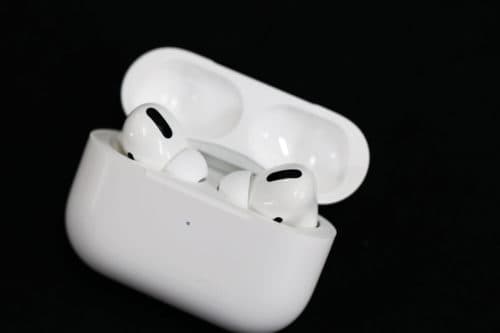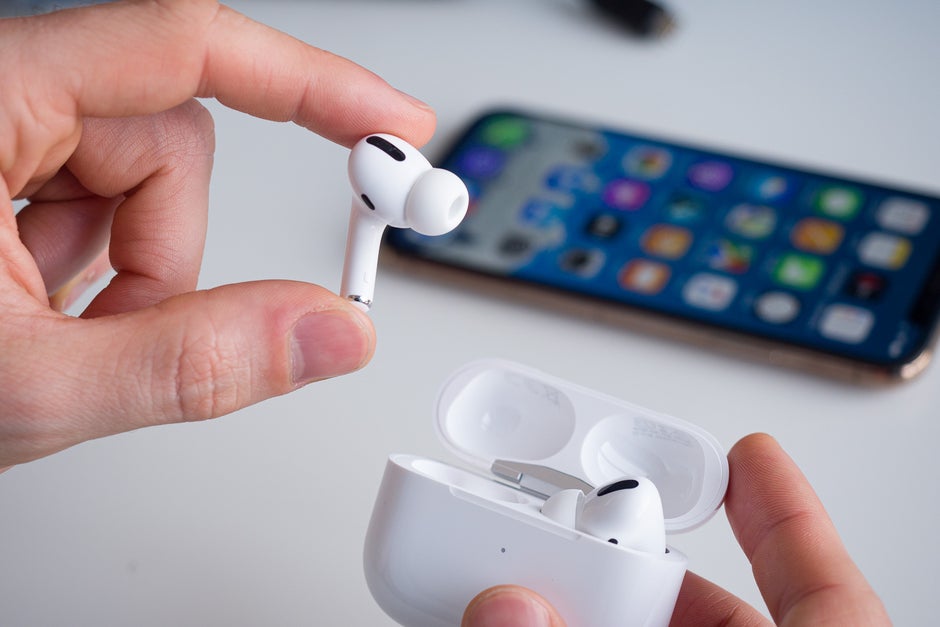
APPLE AIRPODS PRO FIT SIMULATOR
We measured the maximum loudness level that the earbuds would permit by using an ear simulator and a couple of small PA speakers to replicate the sound at a loud concert. Consider the results that we got in these measurements to be a best-case scenario-your results may not be as good.


Any set of earphones or earplugs will fit differently in your ear canals, which, like your hands, have their own distinctive size and shape. Assuming that a person has generally low daily noise exposure, if we could tell that a set of earbuds limited the sound to 91 dB, we would know that those earbuds would keep that person’s hearing reasonably safe over the course of a two-hour concert.įortunately, we have a device that can precisely measure how much sound gets past a set of earbuds or earplugs and onto the eardrum: a GRAS RA0402 ear simulator, which includes a conical, stainless steel coupler into which most earbuds and earplugs fit perfectly. We also measured a variety of concert-oriented and generic earplugs for comparison. For the objective testing, we measured the level-limiting capabilities of three popular sets of earbuds: the Apple AirPods Pro (2nd generation), the Bose QuietComfort Earbuds II, and the Soundcore Space A40. To test whether earbuds provide adequate hearing protection, we performed both objective and subjective evaluations. It’s preventable, but you need to understand what causes it and take early preventive measures. Noise-induced hearing loss is a growing problem for kids. And if the sound goes up to 91 dBA, your safe listening time is down to 2 hours.” A rock concert that registers at 110 dB could damage your hearing in just two minutes. If the sound goes up to 88 dBA, it is safe to listen to those same sounds for 4 hours. The American Speech-Language-Hearing Association provides specific guidelines: “ can listen to sounds at 85 dBA for up to 8 hours.

The louder the environment, the less time it takes for damage to occur. Noise-induced hearing loss is a growing concern, and everyone should take steps to limit the length and loudness of their noise exposure by wearing some form of hearing protection in loud environments. And they’re already used to how the earbuds feel in their ears, so they would be more likely to wear the earbuds for hearing protection. In contrast, many people carry earbuds with them everywhere they go, so they would always be ready with a form of hearing protection if the sound got too loud. While concert earplugs are an inexpensive and effective option for hearing protection, even our favorites have downsides-voices can sound muffled, you may not like how the earplugs feel in your ears, and you have to remember to bring them with you. This statement got us thinking: Could earbuds really be a better choice for hearing protection than earplugs, or are they more likely to allow hearing damage? We decided to put several popular earbuds to the test and find out. A few media outlets explicitly encouraged using the AirPods Pro instead of earplugs at concerts-with one suggesting that the adaptive transparency mode would bring “anything over 85dB back down to that level.” The writer continues, “As a result, you hear music roughly as you would without them and can avoid potential hearing damage.” Some music fans concluded that this meant they could use the AirPods Pro earbuds for hearing protection at loud clubs and concerts.

While you’re wearing the earbuds, this mode lets in sounds from the outside world but limits volume levels to “minimize the intensity of loud noises like sirens or power tools,” according to Apple. When Apple introduced the second-generation AirPods Pro earbuds, one of the benefits the company touted was the hear-through mode, which Apple calls adaptive transparency (video).


 0 kommentar(er)
0 kommentar(er)
